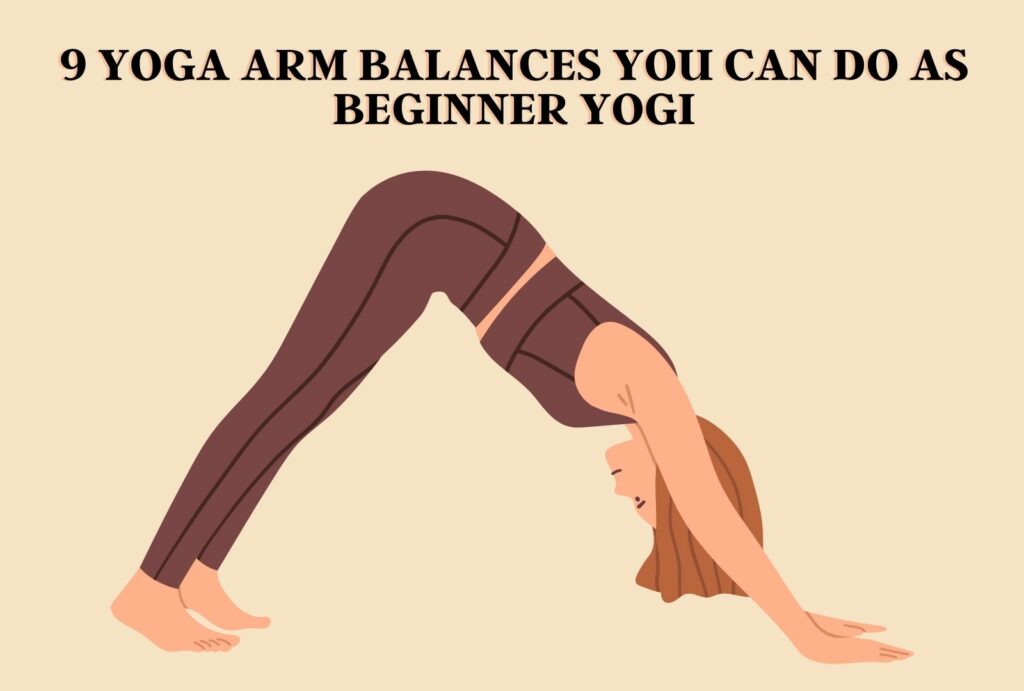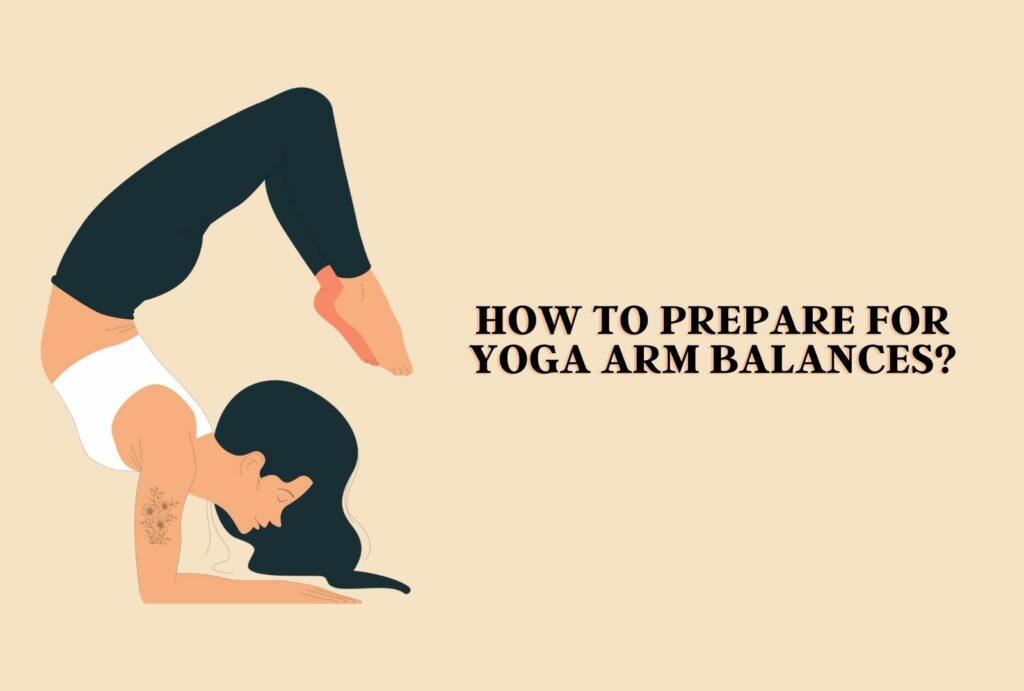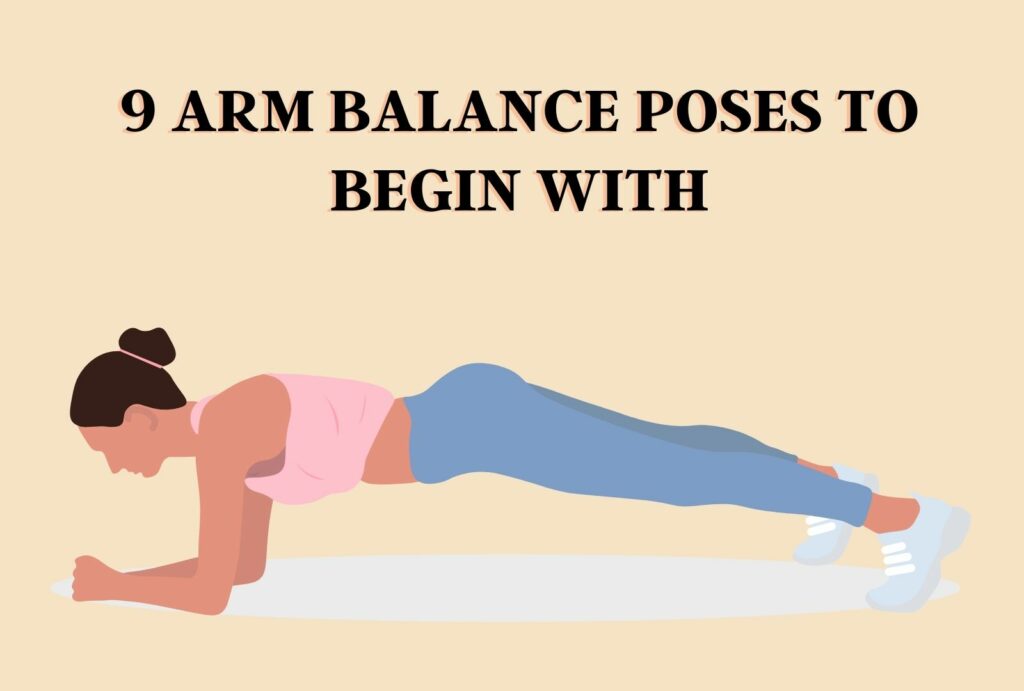
Arm balances are a popular type of yoga pose that challenge your balance, strength, and focus. While they may seem intimidating, there are many arm balance poses that are accessible to beginner yogis. Here are nine yoga arm balances you can try as a beginner.
1. Crow Pose:
This is one of the most well-known arm balance poses and is great for building arm and core strength. Start in a squat position, placing your hands on the ground in front of you. Press your knees into your triceps and lean forward, lifting your feet off the ground.
2. Side Crow:
Similar to crow pose, side crow involves twisting your torso to one side. Begin in a low lunge position and twist your torso towards your front leg. Place your hands on the ground and lift your back leg, leaning forward until your feet lift off the ground.
3. Eight Angle Pose:
This pose involves a combination of arm balances and twists. Begin in a seated position and place one foot over your opposite thigh. Twist your torso towards your bent knee, placing your hands on the ground. Lean forward and lift your hips off the ground, extending your legs.
4. Firefly Pose:
This is a challenging pose that requires strong arms and wrists. Start in a forward fold position and place your hands on the ground. Place your shins on the back of your upper arms and lean forward until your feet lift off the ground.
5. Flying Pigeon Pose:
This pose involves a combination of hip openers and arm balances. Begin in a pigeon pose and place your hands on the ground. Lift your back leg and lean forward until your front foot lifts off the ground.
6. Peacock Pose:
This pose requires a strong core and wrist strength. Begin in a seated position with your legs extended. Place your hands on the ground and lift your legs, leaning forward until your feet lift off the ground.
7. Side Plank:
This pose is a great introduction to arm balances and involves building strength in your arms and core. Begin in a plank position and shift your weight onto one arm, lifting your opposite arm towards the ceiling.
8. Grasshopper Pose:
This pose involves a combination of hip openers and arm balances. Begin in a low lunge position and place your hands on the ground. Lift your back leg and thread it under your front leg, placing your foot on the ground. Lean forward and lift your back leg until it’s parallel to the ground.
9. Supported Headstand:
While not a traditional arm balance, headstands can be a great introduction to building strength in your arms and shoulders. Start on your hands and knees and place your forearms on the ground. Interlace your fingers and place the crown of your head on the ground. Lift your legs and engage your core, holding the pose for several breaths.
In conclusion, arm balance poses can be challenging but rewarding for beginner yogis. With regular practice, you can build strength and improve your balance and focus. Experiment with these nine poses and find the ones that work best for your body and practice. Remember to always listen to your body and take breaks as needed.
How To Prepare For Yoga Arm Balances?

Yoga arm balances can be intimidating, but with proper preparation, you can build the strength, flexibility, and focus needed to execute these poses. Here are some tips on how to prepare for yoga arm balances poses.
1. Warm-up:
Warming up your body is crucial before attempting arm balances. Start with some gentle stretching to loosen up your muscles, and then move into some sun salutations to get your blood flowing.
2. Build Strength:
Arm balances require upper body and core strength. Incorporate exercises that target your arms, shoulders, and core, such as push-ups, planks, and shoulder presses.
3. Improve Flexibility:
Some arm balance poses require deep hip and hamstring stretches, such as flying pigeon or eight angle pose. Incorporate hip-opening poses like pigeon and lizard, and hamstring stretches like forward folds and standing splits.
4. Practice on Stable Surface:
When you first start practicing arm balances, practice on a stable surface like a yoga mat or a carpeted floor. This will help you build confidence and control before attempting the pose on an unstable surface.
5. Use Props:
Props like blocks and straps can help you build strength and improve flexibility in preparation for arm balances. For example, using a block in a low lunge can help you build the core and leg strength needed for flying pigeon pose.
6. Work with a Teacher:
Working with an experienced yoga teacher can help you learn the proper alignment and technique needed to execute arm balances. They can also give you modifications and adjustments to make the pose more accessible for your body.
In conclusion, preparing for yoga arm balances involves building strength, improving flexibility, and practicing on a stable surface. Incorporating these tips into your yoga practice can help you progress towards more advanced arm balance poses. Remember to always listen to your body and take breaks as needed, and don’t be discouraged if you don’t master these poses right away. Consistent practice and patience will help you progress towards your goals.
9 Arm Balance Poses To Begin With

Arm balance poses are a fun and challenging aspect of yoga practice that can help you build strength, balance, and focus. If you’re new to arm balances, here are nine poses to get you started:
1. Crow Pose:
This is a classic arm balance that requires balance and upper body strength. Begin in a squat position and place your hands on the ground in front of you, fingers spread wide. Lean forward and lift your feet off the ground, balancing on your hands.
2. Side Crow Pose:
This variation of crow pose challenges your core and requires more upper body strength. Start in a low squat and twist to one side, placing your hands on the ground. Lift your hips and legs off the ground, balancing on your hands.
3. Firefly Pose:
This pose challenges your arm and core strength, and requires flexibility in your hamstrings. Begin in a forward fold, then place your hands on the ground between your feet. Slowly lift your legs off the ground and straighten them out in front of you.
4. Eight Angle Pose:
This pose challenges your arm, core, and hip strength, and requires flexibility in your hips. Begin in a low lunge position and place your hands on the ground. Twist your torso and place one foot on the opposite tricep, then slowly lift the other foot off the ground and straighten your leg.
5. Flying Pigeon Pose:
This pose challenges your arm and core strength, and requires flexibility in your hips. Begin in pigeon pose and place your hands on the ground. Slowly lift your back leg off the ground and balance on your hands.
6. Grasshopper Pose:
This pose challenges your arm, core, and hip strength, and requires flexibility in your hips. Start in a seated position and place your hands on the ground behind you. Lift your legs off the ground and cross your ankles, balancing on your hands.
7. Side Plank Pose:
This pose challenges your arm and core strength, and requires balance. Start in plank pose and shift your weight onto one hand, stacking your feet on top of each other. Lift your top arm towards the sky, holding the pose for a few breaths.
8. One-Legged King Pigeon Pose:
This pose challenges your hip and back flexibility, as well as your arm and core strength. Begin in downward-facing dog and bring one knee to the same wrist. Slowly lower your torso to the ground and lift your back leg off the ground, balancing on your arms.
9. Forearm Stand Pose:
This pose challenges your arm, core, and shoulder strength. Begin in dolphin pose and place your forearms on the ground, elbows under your shoulders. Walk your feet towards your head and lift them off the ground, balancing on your forearms.
In conclusion, arm balance poses can be a fun and challenging addition to your yoga practice, and these nine poses are a great place to start. Remember to listen to your body, and don’t push yourself too hard too quickly. With consistent practice, you can build strength and confidence in your arm balances, and progress to more advanced poses over time.
Final words
In conclusion, arm balance poses can be challenging, but with patience and practice, they can be a great addition to your yoga routine. Remember to start with the basics and work your way up, and always listen to your body to avoid injury.
Whether you are a beginner or an experienced yogi, adding arm balance poses to your practice can help you build strength, flexibility, and confidence. With a solid foundation, you can work towards more advanced arm balances and enjoy the benefits of a balanced yoga practice.
Overall, arm balances can be an exciting and rewarding aspect of yoga. By incorporating these poses into your practice, you can challenge yourself both physically and mentally, and experience the joy of achieving something you once thought was impossible. So, keep practicing, stay safe, and have fun exploring the world of arm balances!